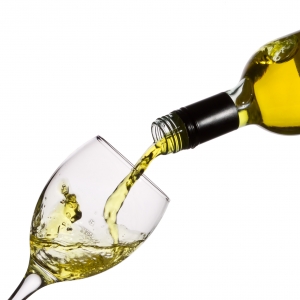 Alcohol is another much debated subject. The effect stress on alcohol intake, like its effect on appetite, varies. In general, the stressed person drinks more. Once people are tired sitting in front of the computer for complete day, it is not surprising that they want a couple of relaxing drinks once they get away from their place of work. It helps them to unwind. All is well if they keep their daily dose to within reasonable limits. However, very tense and stressed people drink for reassurance or to help them forget their current problems. If going to a party, they may have a couple of snifters before they leave their house and another quick one as soon as they are at the party. Others drink in order to survive the immediate stresses of work. For example, I once knew a very distinguished statesman who always needed at least two doubles before he went into a meeting. Once there, he needed to be kept topped up, otherwise his natural reticence would hinder his natural eloquence and charm.
Alcohol is another much debated subject. The effect stress on alcohol intake, like its effect on appetite, varies. In general, the stressed person drinks more. Once people are tired sitting in front of the computer for complete day, it is not surprising that they want a couple of relaxing drinks once they get away from their place of work. It helps them to unwind. All is well if they keep their daily dose to within reasonable limits. However, very tense and stressed people drink for reassurance or to help them forget their current problems. If going to a party, they may have a couple of snifters before they leave their house and another quick one as soon as they are at the party. Others drink in order to survive the immediate stresses of work. For example, I once knew a very distinguished statesman who always needed at least two doubles before he went into a meeting. Once there, he needed to be kept topped up, otherwise his natural reticence would hinder his natural eloquence and charm.
There is, as usual, another side to the coin. Just as a depressed or stressed person may feel no pleasure in anyone’s company, they may also not want to drink. It is the change in someone’s drinking pattern that is always of interest to a doctor.
How much of Alcohol is Too Much
At present, governmental health guidelines recommend no more than twenty-eight units in a week (spread over seven days – not all at once!) for men and twenty-one units a week for women. The trouble with this recommendation is that anecdotal evidence – and even the evidence of people’s own experience – shows that in most cases, this ration is unnecessarily tight. The difficulty official bodies have when recommending safe limits is that not only do they have to avoid rousing the ire of minority groups who have strong moral opinions on alcohol, but they also have to settle on a figure that is so safe that it won’t damage either the short, overweight female who can drink only a bit more than her thinner counterparts or the muscular, giant male who can metabolize large amounts of alcohol without risk.
Doctors in public health discussing safe alcohol levels are like engineers who are asked to design a bridge. Just as engineers have to prepare plans so pat the heaviest vehicle may cross it safely, so doctors tend to recommend an alcohol dose that could hurt nobody. Thus the engineers’ bridge may absurdly robust for the ordinary family car, and similarly there is evidence that the majority of men don’t need to follow the strict limits, for it is likely that many will suffer if they drink up to forty-two units in a week. However, there is no denying that the overwhelming majority of people are likely to have serious problems if they drink more than seventy units.
In fact, the safe limit for alcohol consumption varies from person to person. The problem is that if the limits are too strict they are ignored because they are not believed; if too lax, then some people may have trouble. Red wine remains the healthiest alcoholic drink on the market, as grape skins are utilized fully in its manufacture; as a result, red wines include a larger dose of flavonoids which, as antioxidants, are invaluable to health.
